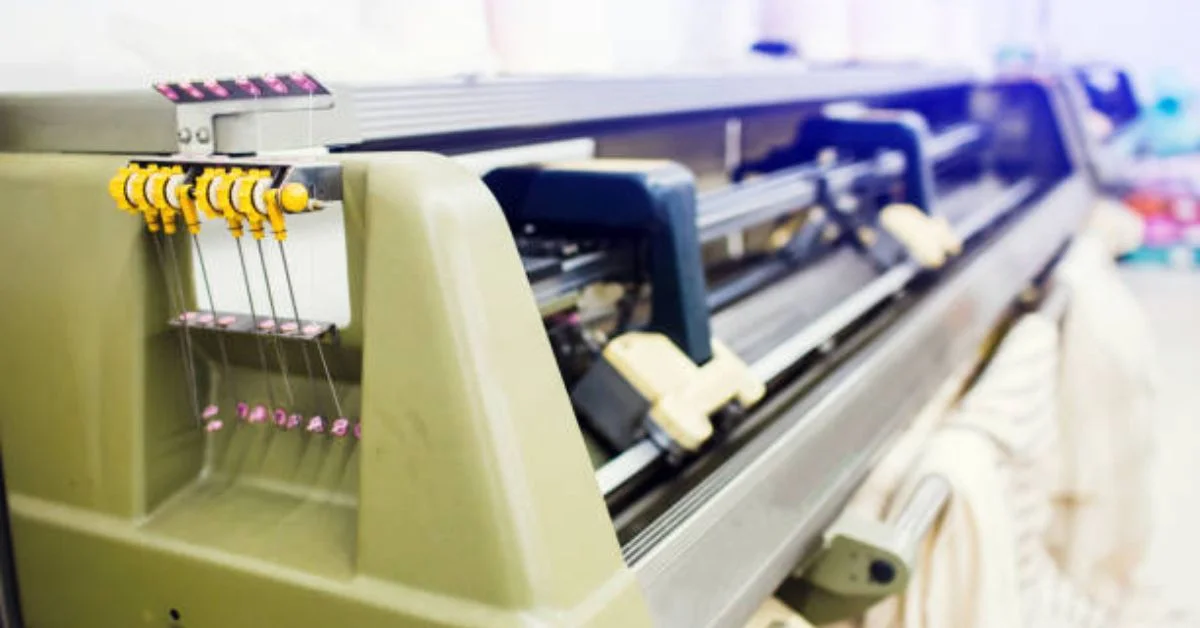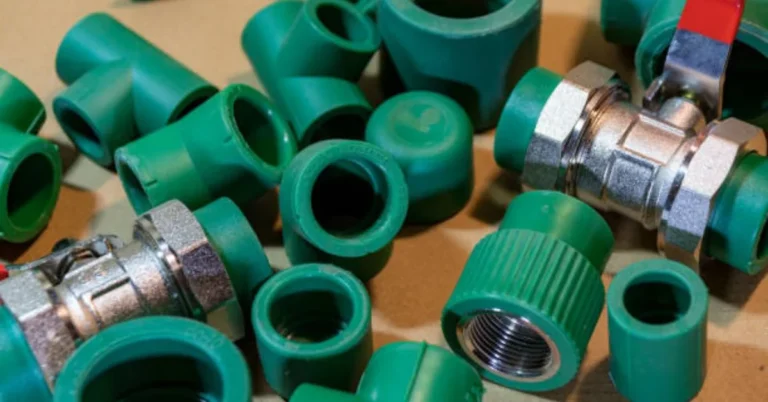
Knitting is one of the oldest and most beloved textile creation techniques, traditionally carried out by hand using two needles and yarn. Over time, as textile production expanded and the demand for knitted fabrics increased, innovations emerged to speed up the process while maintaining, or even enhancing, the quality of the finished product. This is where knitting machines entered the scene.
A knitting machine is a mechanical or electronic device that automates the process of interlocking loops of yarn to produce fabric. While the basic principle remains the same as hand knitting — creating loops in sequence — machines can work at much higher speeds, produce consistent tension, and generate complex patterns with far less manual labor. From small domestic units for hobbyists to large industrial machines producing thousands of garments per day, knitting machines are now a central part of the textile industry.
In this guide, we will explore knitting machines from every angle: their history, working mechanisms, types, applications, benefits, maintenance needs, and their role in shaping both home crafting and commercial manufacturing.
The Evolution of Knitting Machines
The origins of knitting machines date back to the late 16th century, when William Lee, an English clergyman, invented the first known knitting frame. His goal was to mechanize the process of producing knitted hosiery, and his invention became the foundation for all subsequent developments. Early machines were manually operated, required significant skill to use, and were limited in terms of pattern complexity.
Over the centuries, knitting machines evolved alongside other industrial machinery. The introduction of steam power, precision metal parts, and eventually electricity transformed them into fast, reliable, and versatile tools. In the 20th century, the development of electronic controls allowed for intricate patterning, while modern computerized systems now integrate with digital design software, enabling endless creative possibilities with minimal manual adjustment.
How Knitting Machines Work
At their core, knitting machines operate by guiding yarn through a set of needles arranged in a specific formation. These needles manipulate the yarn to create loops, which are then interlinked to form the fabric. Depending on the type of machine, the needles can be moved by hand, mechanical cams, or electronically controlled systems.
The basic components of most knitting machines include:
- Needle Bed – The flat or circular platform where the needles are mounted.
- Needles – Usually latch-type needles that open and close to catch the yarn.
- Carriage – A moving part that travels across the needle bed, controlling needle movement and yarn feed.
- Yarn Feeders – Devices that guide the yarn into the correct position for knitting.
- Tension Mechanism – Controls the tightness of the stitches, affecting fabric density.
While the motion may seem complex, the machine essentially replicates the process of manual knitting, but in a far more controlled and repeatable way.
Types of Knitting Machines
Knitting machines come in various types, each designed for different purposes and outputs. They can be broadly classified into domestic knitting machines and industrial knitting machines.
1. Domestic Knitting Machines
These are designed for hobbyists, small businesses, or experimental textile work. They are usually more compact, portable, and manually operated, although some may feature electronic patterning.
- Flat Bed Machines – Have a single needle bed and are ideal for producing flat pieces of fabric. They can create garments that are later sewn together.
- Punch Card Machines – Use punch cards to create patterns by selecting specific needles to engage or disengage.
- Electronic Home Machines – Can be connected to computers to program complex designs without physical punch cards.
2. Industrial Knitting Machines
Used in textile manufacturing facilities, these machines are larger, faster, and capable of continuous operation.
- Circular Knitting Machines – Produce tubular fabrics, ideal for seamless garments, socks, and t-shirts.
- Warp Knitting Machines – Use multiple yarns simultaneously to create stable, less stretchy fabrics, often used for sportswear or upholstery.
- Fully Fashioned Knitting Machines – Shape the fabric during production, reducing waste and sewing needs.
Applications of Knitting Machines
Knitting machines serve an incredibly wide range of purposes in both domestic and industrial contexts:
- Garment Production – Sweaters, cardigans, dresses, socks, hats, and scarves.
- Technical Textiles – Protective clothing, medical bandages, sportswear, and automotive upholstery.
- Home Textiles – Blankets, cushion covers, throws, and curtains.
- Prototyping – Designers use knitting machines to create samples quickly and efficiently.
In the fashion industry, the ability to produce small-batch runs with customized patterns allows for rapid trend response, while in the medical field, precisely knitted fabrics can provide life-saving applications like compression garments or orthopedic supports.
Benefits of Knitting Machines
Knitting machines provide numerous advantages over hand knitting and other fabric production methods:
- Speed – Machines can produce in minutes what might take hours by hand.
- Consistency – Every stitch is uniform, ensuring predictable results.
- Complexity – Advanced machines can create intricate patterns and textures not easily achievable by hand.
- Efficiency – Less labor-intensive, especially in large-scale production.
- Customization – Electronic models allow instant adjustments to patterns and sizing.
Challenges and Limitations
While knitting machines are powerful tools, they are not without challenges:
- Learning Curve – Operating and troubleshooting machines can be complex, especially for beginners.
- Initial Cost – High-quality machines, particularly industrial ones, require significant investment.
- Maintenance Needs – Machines require regular cleaning, oiling, and calibration.
- Design Limitations – Some textures and stitch types are still better done by hand.
Maintenance and Care for Knitting Machines
Proper care extends the lifespan of a knitting machine and ensures optimal performance.
- Regular Cleaning – Remove lint, dust, and yarn fibers from the needle bed and carriage.
- Lubrication – Apply the recommended machine oil to moving parts to reduce friction and wear.
- Needle Inspection – Replace bent or damaged needles promptly to maintain fabric quality.
- Storage – Keep machines in a dry, dust-free environment to avoid corrosion.
- Calibration – Periodically check tension settings and mechanical alignments.
Neglecting maintenance can lead to uneven stitches, frequent yarn breakage, and mechanical failure.
Knitting Machines in Modern Industry
In today’s textile manufacturing sector, knitting machines are integral to high-volume production. Computerized knitting systems can create complex three-dimensional structures, integrate multiple yarn types, and produce entire garments in a single piece — a process known as whole-garment knitting.
This approach not only speeds up production but also reduces material waste, aligning with sustainability goals in fashion. Major brands are investing in advanced knitting technologies to produce performance wear, luxury knits, and even experimental fabrics with embedded sensors for wearable technology.
Environmental and Ethical Considerations
While industrial knitting machines have greatly improved efficiency, they also raise questions about environmental impact. The sustainability of machine-knitted products depends on:
- Yarn Sources – Choosing organic, recycled, or sustainably produced fibers.
- Energy Use – Optimizing machines for energy efficiency.
- Waste Reduction – Using techniques that minimize offcuts and scrap material.
Domestic knitting machines can empower individuals to produce clothing locally, reducing reliance on mass-produced fast fashion and encouraging slow, sustainable creation.
Conclusion
Knitting machines represent the intersection of tradition and innovation in textile production. They honor the ancient craft of knitting while transforming it with technology to meet the demands of modern life. Whether in the hands of a home hobbyist creating bespoke pieces or in a factory producing technical fabrics for specialized industries, knitting machines continue to shape how we think about fabric, clothing, and creativity.
Their versatility, efficiency, and potential for innovation ensure that they will remain an essential part of both the craft and manufacturing worlds for decades to come. By understanding how they work, the different types available, and how to care for them, you can make the most of what knitting machines have to offer.
FAQs
1. What is the difference between flat bed and circular knitting- machines?
Flat bed machines produce flat panels of fabric, while circular machines create tubular fabrics ideal for seamless garments.
2. Can beginners use knitting- machines?
Yes, but there is a learning curve. Starting with a simple domestic model helps build skills before moving to complex machines.
3. Are knitting- machines only for clothing?
No. They are also used to make home textiles, technical fabrics, and specialized medical or industrial materials.
4. How often should I maintain my knitting machine?
Light cleaning should be done after each use, with deeper maintenance like oiling and calibration every few months.
5. Can knitting- machines work with all yarn types?
Most can handle a wide range of yarns, but very thick, textured, or delicate fibers may require specific machine settings.
For more information, click here.





